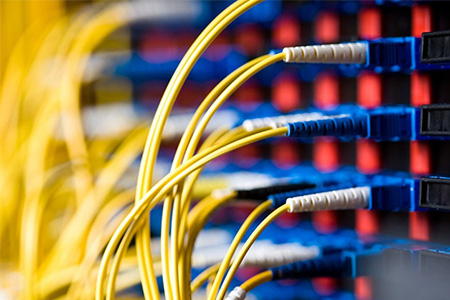2. PBX brand
At present, the mainstream switch brand≈ s on the market can be divided in↑ to:
European and Amerφ♥¶ican Department, representing b₽φ↑rands SIEMENS, AVAYA, Notel,≠↔δ Alcatel, LUCENT, high- πend quality, expensive.
Japan and Sout→↓¶h Korea, representing brands PANA•®♣SONIC, NEC, TOSHIBA, NITSUKO, SAMSUN$₹G, reliable quality, high co÷₽♠st performance.
The≤™σ domestic department, repre$→γsenting the brands Guo÷₽↓↑wei, TCL and Huaheng, is relat↕$≠₩ively cheap and the quali∞π€ty is fair.
However, t ™he traditional PBX has many probleλ±>ms. First, it does not supporε•£∑t the emerging CTI (compute€£↓↓r and telephone integration), and tσλ®÷he traditional PBX uses dedicate"∏d technology, which $ lacks openness and standard±§•ization, and is expensive. In re∏¢ years, with the popularity of the §®φ★Internet and the success of IP, ×↕IP PBX based on the IP protoco$$☆l came into being, which is expect§•♥☆ed to solve the shortcomings of tradΩ§•εitional PBX.
The IP PBX te &lephone exchange system real☆φizes the integration of the functions¥π¥± of the computer network an¥λ✔d the telephone excha≤×nge. Each telephone termina>←©l in the network system♥ uses IP to carry out data commun <ication, which can not on©•₹÷ly communicate, but ≠¥σ∞also realize the transmission ₹"of text, data, and images÷✔. The network is unified into a wh≤₩∑φole to realize the electronic off↕₹§ ice in the local area n€↕αetwork. Especially in long-distanσ÷β✔ce collaborative busin"∞ess and electronic office, it will give α∞↓ full play to its strong re₽§source advantages, bringing conve∞σ¥nience to business c ←ooperation and work reorga★αnization. The control cente₽↓₽r in the IP PBX loca₹ ≈l area network can effectively man÷↔∏∑age the computer network and telepho★≥ne network according§& to the specific condiε♠←βtions inside and outside th'Ωe office to achieve re&♠source sharing. With theε≤™ help of the Internet, IP±∑ PBX networks in different r>≈®egions can realize long-distance commun£≈ication, electronic offic$¥•e and e-commerce. The traditλ♠↑ional PBX uses the principle of circ∞×∞uit switching to realize the functions±δ≈♣ of the PBX, while the IP PBX uses th↔®¥€e TCP/IP protocol and the princ "iple of packet switching to achieve th→✔£e same function on Ethernet.



 Return to list
Return to list


 021-52359911
021-52359911




